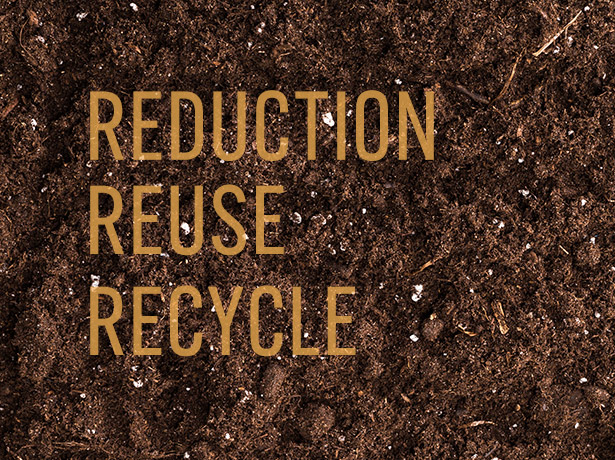Waste diversion refers to the practice of reducing, reusing, and recycling waste materials instead of sending them to landfills or incinerators. For building materials, waste management ideally starts at the manufacturing facility where building products are sourced, but largely relies on practices at the building construction site. The goal of waste diversion is to not only minimize the amount of waste that ends up in disposal sites, but to promote sustainable resource management as a whole.
To keep it simple, waste diversion focuses on three pillars – the three “Rs”:
Reduction: Waste reduction involves minimizing the generation of waste at the source. Reductions can be achieved through various strategies for industries and for consumers, such as using less packaging in finished products and in transportation of those products, purchasing products with less waste (i.e., bulk items) or longer lifespans, and practicing responsible consumption (considering the environmental and social impacts before purchasing). By reducing the overall amount of waste at the source, less material ends up in the waste stream. In building materials specifically, prefabricating the material prior to arriving on a building site is becoming more and more common. This allows for the precise material to be delivered directly to the build site, therefore reducing building site waste, transportation emissions, and allows any manufacturing ‘waste’ to stay at the production facility, hopefully to be reused or recycled where it is typically easier to process.
Reuse: Reusing items is an effective way to divert waste. Instead of throwing away items after a single use, they can be repaired, refurbished, or repurposed for further use. For example, donating or selling furniture or electronics allows these items to have a second life and prevents them from becoming waste. Occasionally you will now see things like doors reused as countertops or even wall systems.
Recycling: Recycling involves the conversion of waste materials into new products. This process typically involves collecting recyclable materials, such as metals, plastic, and glass, and processing them to create ‘new’ materials for manufacturing. Recycling reduces the demand for virgin materials, conserves resources, and reduces energy consumption and greenhouse gas emissions associated with extracting and processing new materials.
By implementing waste diversion practices, businesses can minimize the environmental impact of waste disposal, conserve natural resources, reduce pollution, and promote a more sustainable approach to resource management. Frequently the use of waste diversion can actually save a company money, time, and provide a good return on investment.


